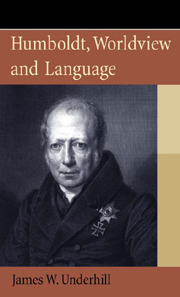Book contents
1 - The Word is a World (La parole est un monde)
from Part I - Language and World
Published online by Cambridge University Press: 12 September 2012
Summary
Linguists by profession and by inclination are attracted to the multiple varieties of speech and language that have grown up in the world. Diversity has been celebrated and, now that languages appear to be dying out with increasing speed, many linguists (Crystal, Dalby, Nettle, Romaine, Hagège et al.) have taken it upon themselves to strive to save them while there is still time. In the discourse of such authors, languages are endangered, almost extinct. The French linguist, Claude Hagège (born in Tunisia in 1936) eloquently sings the praises of ‘living languages’ (les langues vivantes) in his book, Put an End to the Death of Languages (Halte à la mort des langues, 2002). For Hagège the diversity of languages is a symbol of life itself (2002: 33):
Dans le monde du vivant, le foisonnement des espèces est une des images de la vie, qu'il s'agisse des insectes ou des graminées. La diversité des langues, surgissement torrentueux de la vie, est un motif d'émerveillement pour ceux qui n'ont pas peur de les apprendre, et aussi, on veut l'espérer, pour les linguistes eux-mêmes. (ibid.)
In the living world, the burgeoning of species is one of life's images, whether we are thinking of insects or types of grass. The diversity of languages, this torrent-like surging forth of life, is something which strikes with wonder those who are not afraid to learn languages and, we might hope, linguists themselves. (my translation, ‘mT’, hereafter)
- Type
- Chapter
- Information
- Humboldt Worldview and Language , pp. 3 - 9Publisher: Edinburgh University PressPrint publication year: 2009



